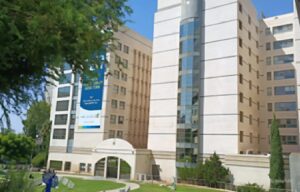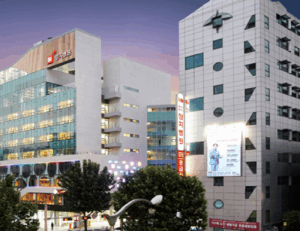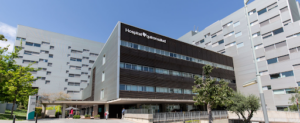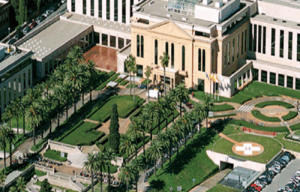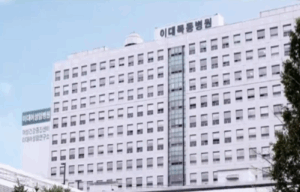Fibroadenoma of the mammary gland
Disease Description
A benign neoplasm most often occurring in women under the age of 35. Fibroadenoma is a rounded, dense structure not adhered to the surrounding tissues, and in 85% of cases affects only one mammary gland.
According to WHO statistics, fibroadenoma is diagnosed in approximately 30% of women and rarely undergoes malignant transformation (develops into cancer).
Symptoms indicating the need for diagnosis and treatment
The disease may be asymptomatic and be discovered accidentally during self-examination or preventive screening.
Depending on the type of fibroadenoma, women may present with:
- Painful lump in the breast
- Discomfort in the mammary gland, increasing toward the end of the menstrual cycle
- Swelling and engorgement of the breast
- Rapid growth of the mass
- Increased nipple sensitivity
- Appearance of capillaries on the breast
Diagnostic and treatment methods
Diagnosis
An important diagnostic criterion is examination on the 5th-7th day of the menstrual cycle. It includes visual assessment of shape, symmetry, skin and nipple condition, as well as palpation of the mammary glands in various positions.
At the next stage, doctors in European clinics use instrumental methods:
- Ultrasound
- Mammography (X-ray of the mammary glands)
- MRI
- Biopsy
Treatment
The main method of treatment is surgical. For this, advanced tumor removal techniques are used:
- Enucleation (shelling) — without affecting the surrounding tissues
- Sectoral resection (for large neoplasms)
- Radio wave (at early stages)
Since mastopathy is associated with a disruption of hormonal rhythm, treatment will include hormone therapy for the prevention of relapses. Western medical centers use ultra-modern new-generation drugs that have passed all clinical trials and are distinguished by high therapeutic activity.
Innovations of world clinics
As a simultaneous diagnostic and treatment method, innovative vacuum aspiration biopsy under ultrasound control is used. Through mini-punctures with a diameter of 2 mm, trained specialists remove neoplasms up to 2—3 cm. The main advantage is the complete removal of the tumor while preserving the milk ducts and achieving an excellent cosmetic effect (without scars and hematomas). Hospitalization is not required for the woman to undergo the procedure, and within 2 hours she can return to her usual lifestyle.
Top clinics
-
 Seoul, South Korea Asan Medical Center
Seoul, South Korea Asan Medical Center -
 Jerusalem, Israel Hadassah Medical Center
Jerusalem, Israel Hadassah Medical Center -
 Petah Tikva, Israel Medical Center “Rabin”
Petah Tikva, Israel Medical Center “Rabin” -
 Istanbul, Turkey Medipol Mega University Hospital
Istanbul, Turkey Medipol Mega University Hospital -
 Istanbul, Turkey Acibadem Altunizade
Istanbul, Turkey Acibadem Altunizade -
 Istanbul, Turkey Acıbadem Ataşehir Clinic
Istanbul, Turkey Acıbadem Ataşehir Clinic -
 Antalya, Turkey Hospital Medical Park Antalya
Antalya, Turkey Hospital Medical Park Antalya -
 Dubai, UAE NMC Healthcare
Dubai, UAE NMC Healthcare -
 Istanbul, Turkey Hospital “Memorial Şişli”
Istanbul, Turkey Hospital “Memorial Şişli” -
 Graz, Austria Leech Private Hospital
Graz, Austria Leech Private Hospital -
 Abu Dhabi, UAE Burjeel Hospital Abu Dhabi
Abu Dhabi, UAE Burjeel Hospital Abu Dhabi -
 Vienna, Austria Debling Private Clinic
Vienna, Austria Debling Private Clinic -
 Vienna, Austria Confraternität Private Hospital
Vienna, Austria Confraternität Private Hospital -
 Heidelberg, Germany Heidelberg University Hospital
Heidelberg, Germany Heidelberg University Hospital -
 Hamburg, Germany Asklepios Nord Heidberg
Hamburg, Germany Asklepios Nord Heidberg -
 Dusseldorf, Germany FKKD Clinical Complex
Dusseldorf, Germany FKKD Clinical Complex -
 Istanbul, Turkey “Memorial Bahçelievler” Clinic
Istanbul, Turkey “Memorial Bahçelievler” Clinic -
 Incheon, South Korea Gil Medical Center at Gachon University
Incheon, South Korea Gil Medical Center at Gachon University -
 Antalya, Turkey Memorial Antalya Hastanesi
Antalya, Turkey Memorial Antalya Hastanesi -
 Seoul, South Korea H+ Yangji Hospital
Seoul, South Korea H+ Yangji Hospital -
 Barcelona, Spain QuironSalud Barcelona Hospital
Barcelona, Spain QuironSalud Barcelona Hospital -
 Barcelona, Spain Dexeus University Hospital
Barcelona, Spain Dexeus University Hospital -
 Barcelona, Spain Medical Center "Teknon"
Barcelona, Spain Medical Center "Teknon" -
 Barcelona, Spain University Hospital Barnaclinic+
Barcelona, Spain University Hospital Barnaclinic+ -
 Madrid, Spain University Clinic HM Madrid
Madrid, Spain University Clinic HM Madrid -
 Madrid, Spain University Hospital HM Monteprincipe
Madrid, Spain University Hospital HM Monteprincipe -
 Hamburg, Germany Asklepios Klinik Barmbek
Hamburg, Germany Asklepios Klinik Barmbek -
 Gebze, Turkey Anadolu Clinic
Gebze, Turkey Anadolu Clinic -
 Madrid, Spain Quiron Salud University Hospital
Madrid, Spain Quiron Salud University Hospital -
 Seoul, South Korea Samsung Medical Center
Seoul, South Korea Samsung Medical Center -
 Seoul, South Korea Medical Center at Ewha Womans University
Seoul, South Korea Medical Center at Ewha Womans University -
 SNUH
SNUH


